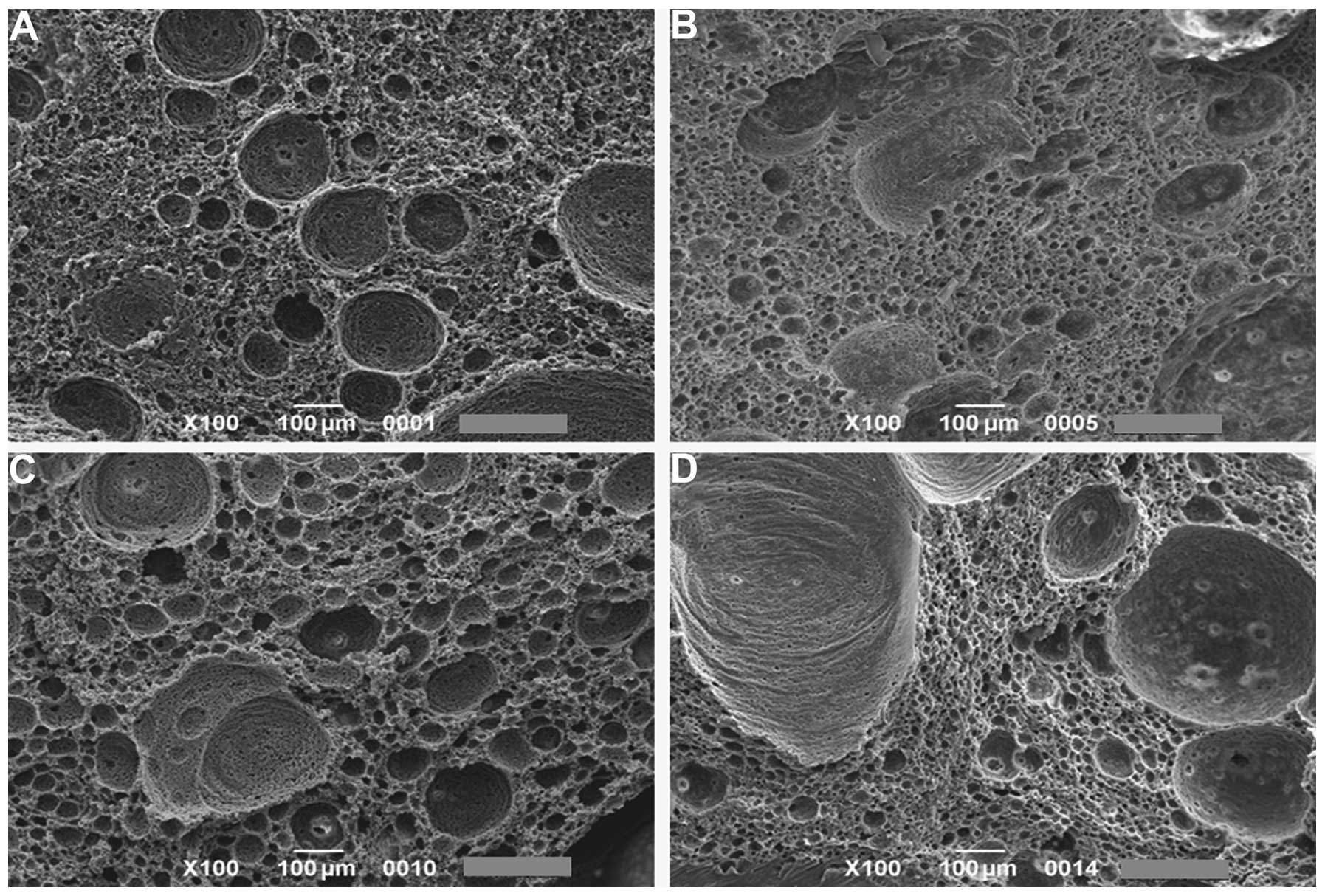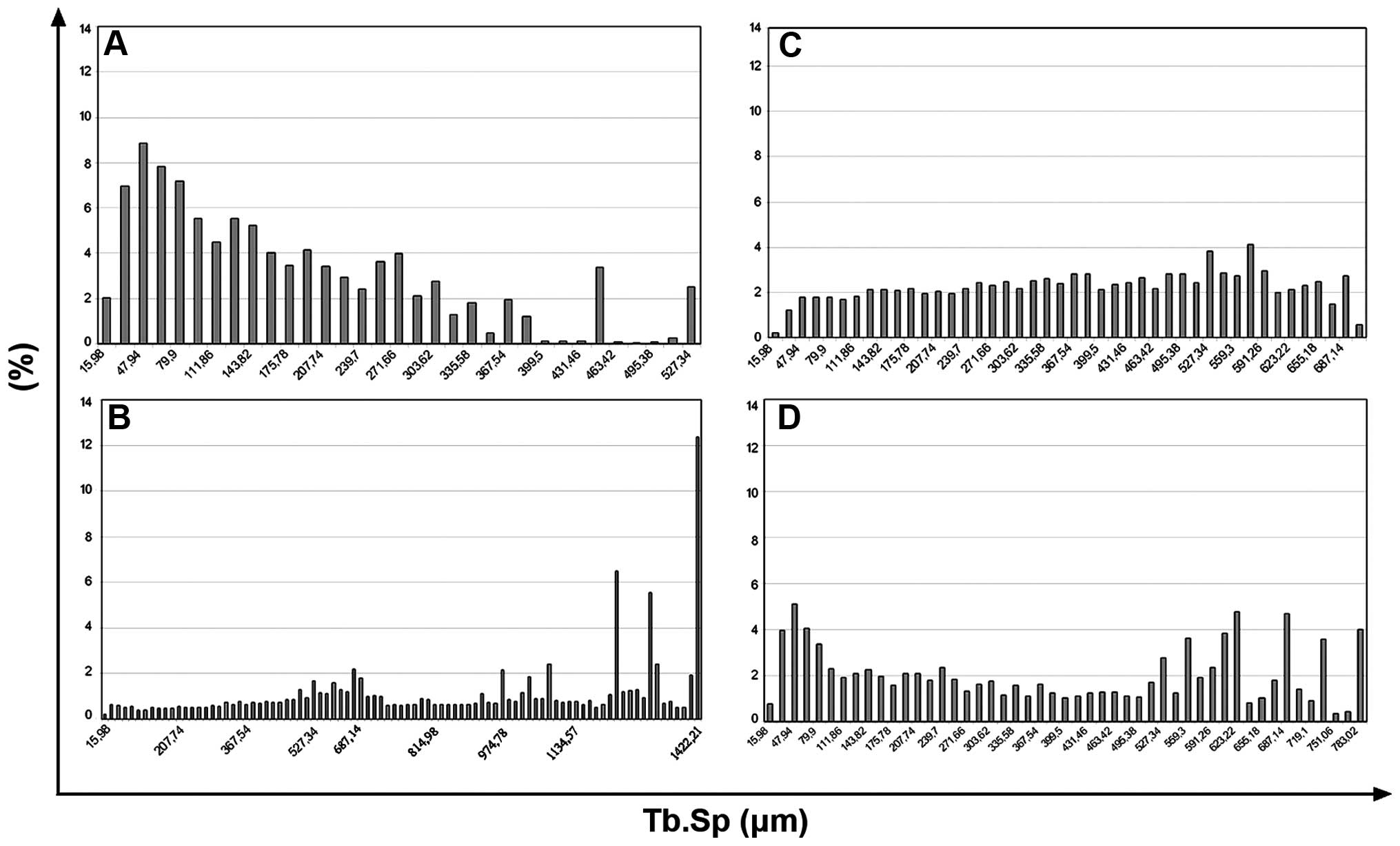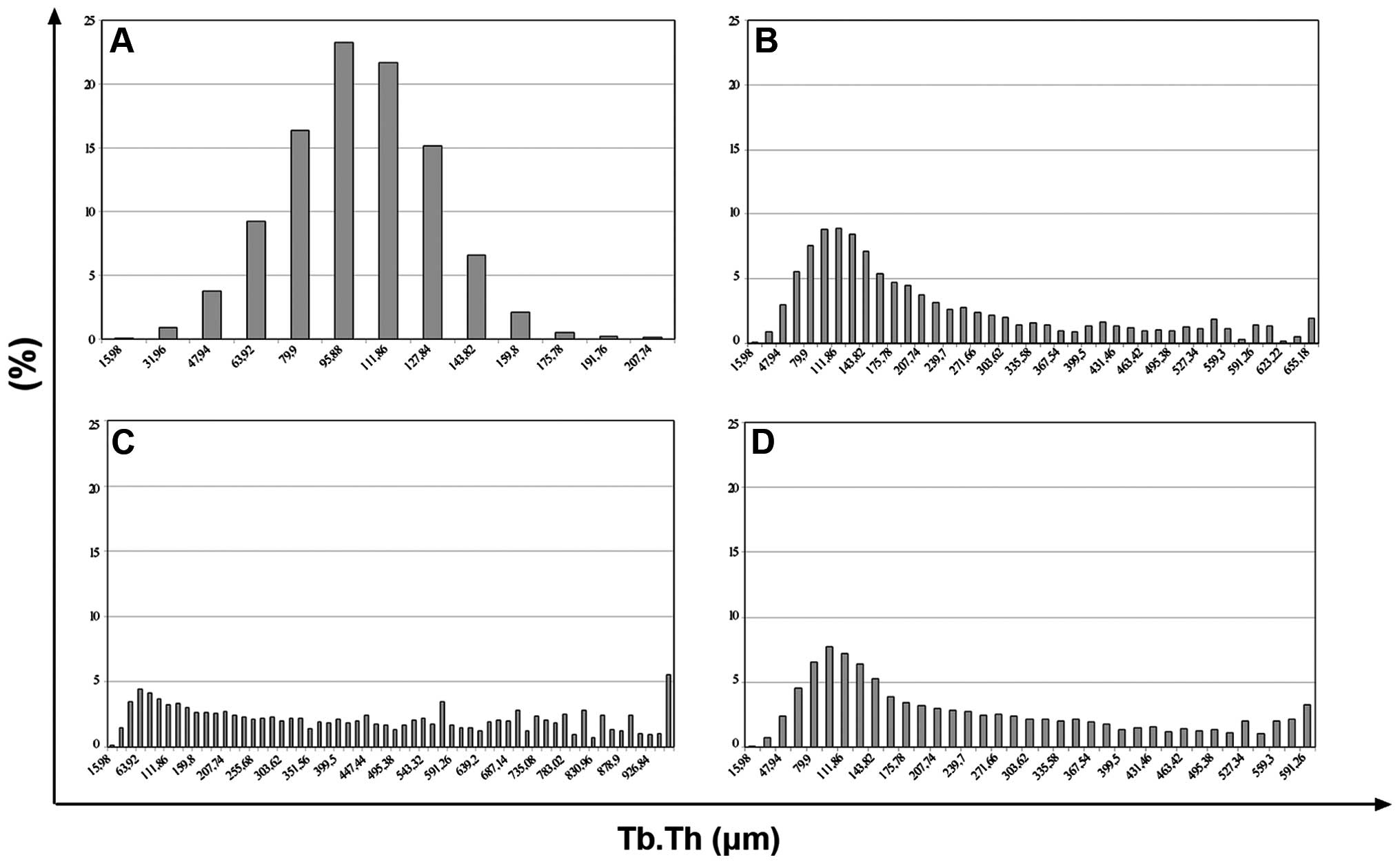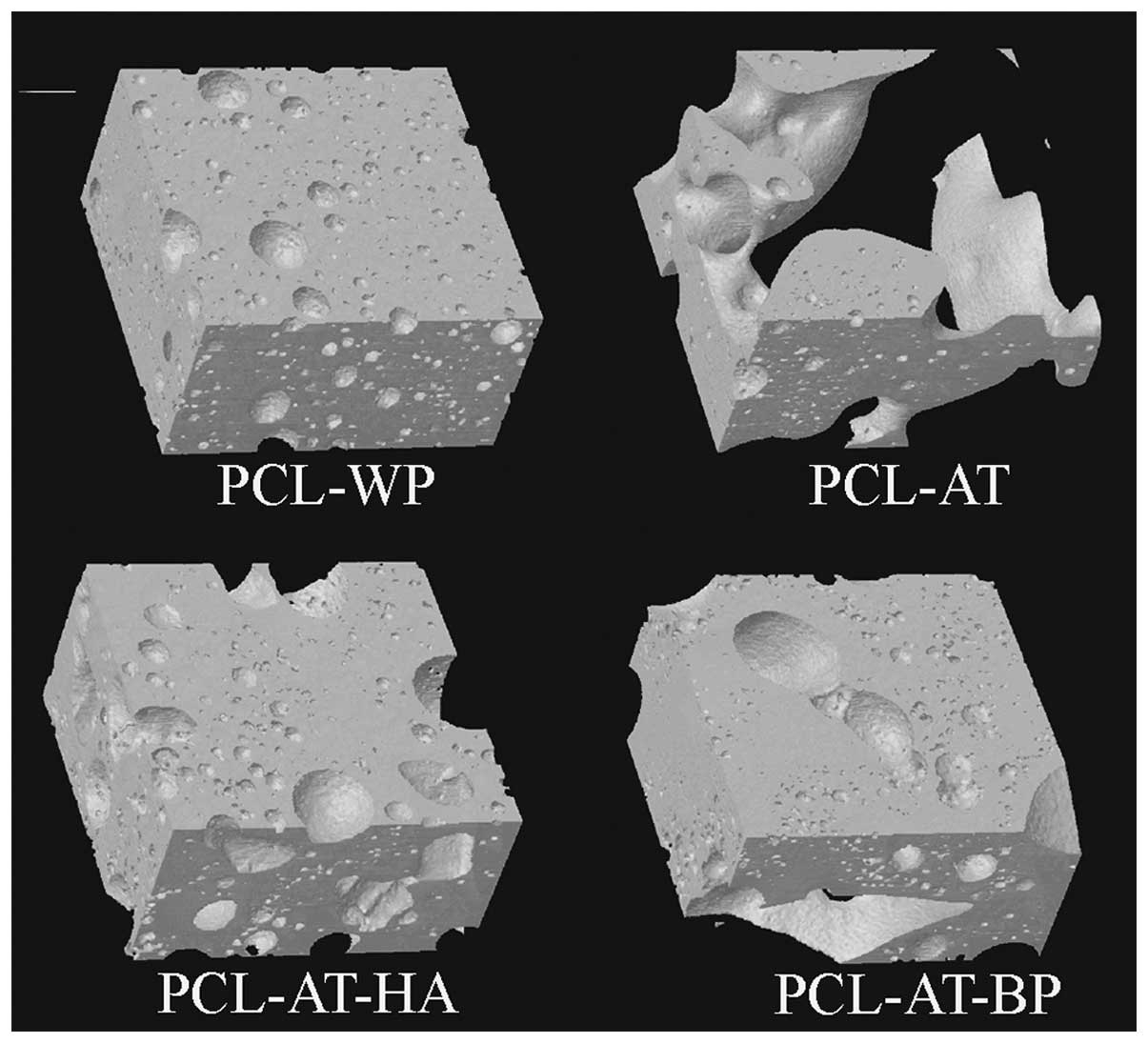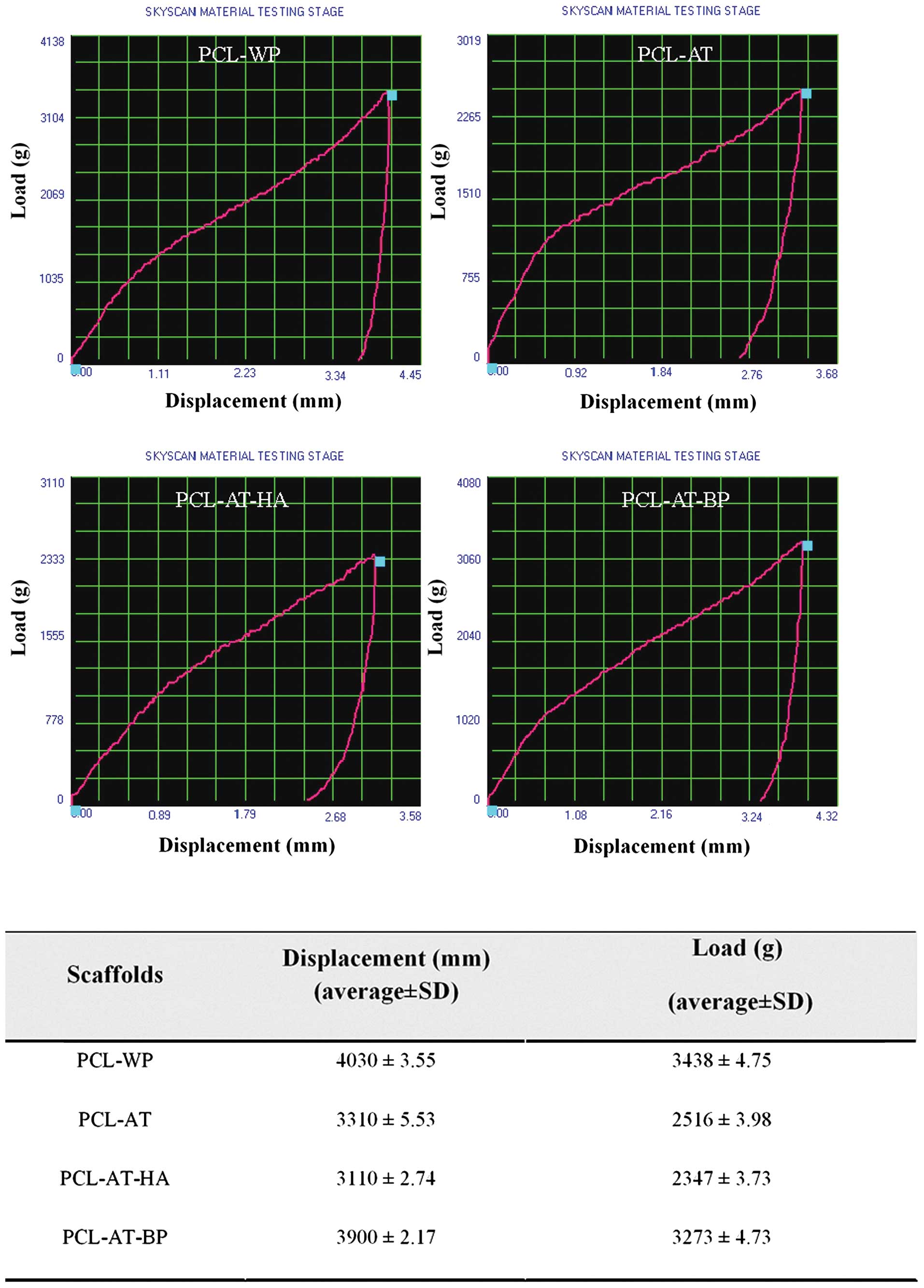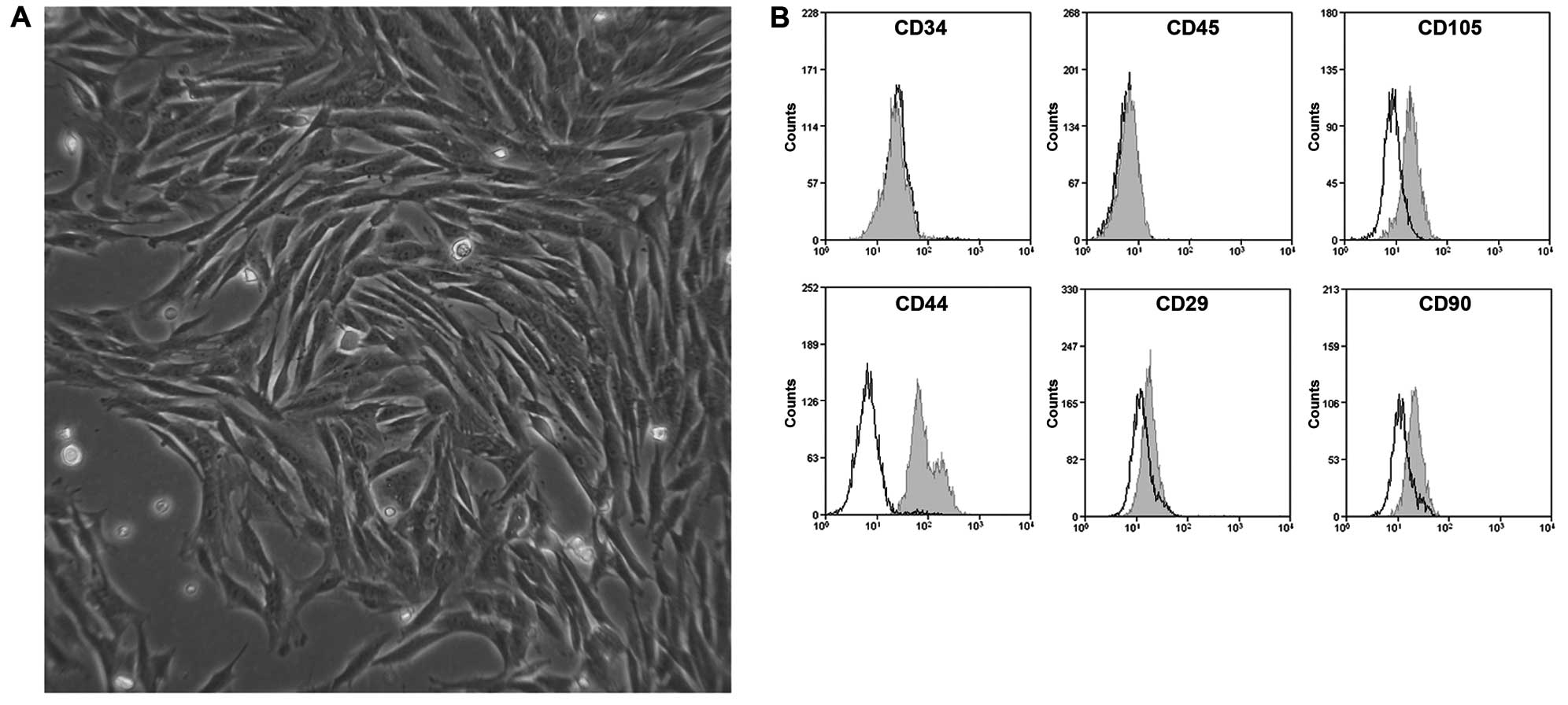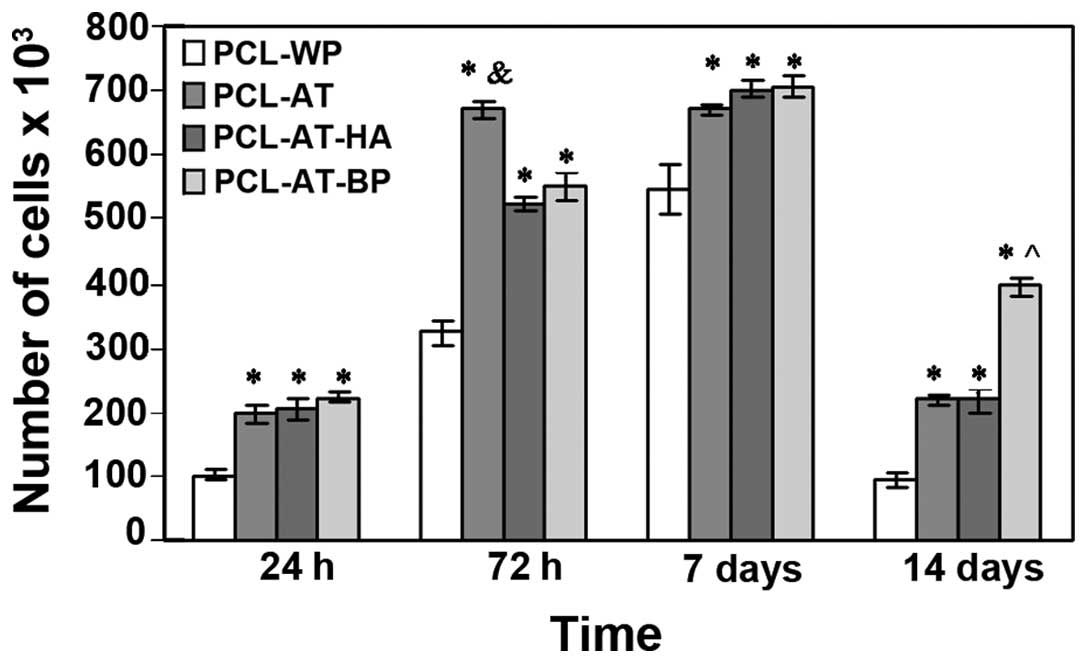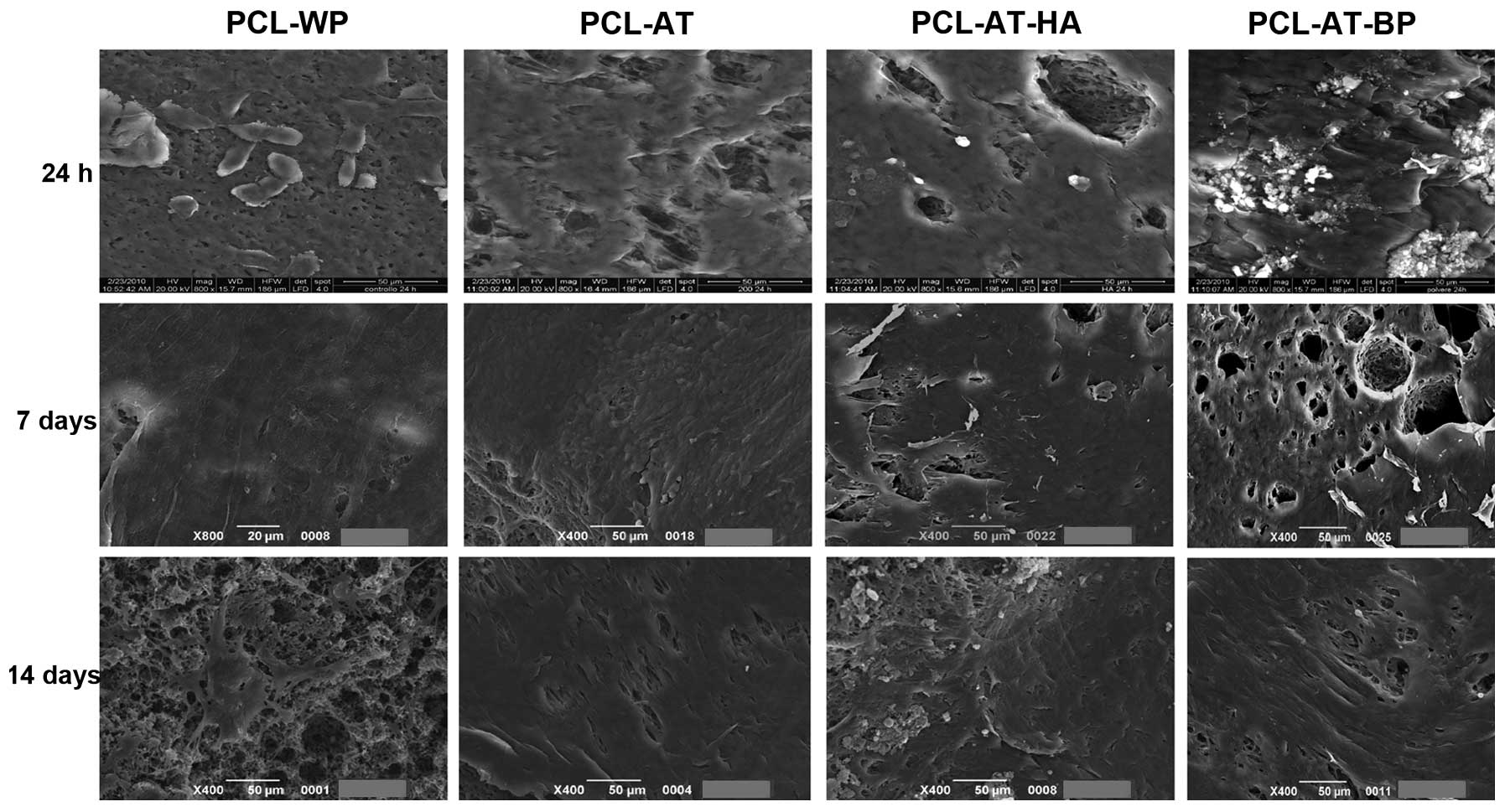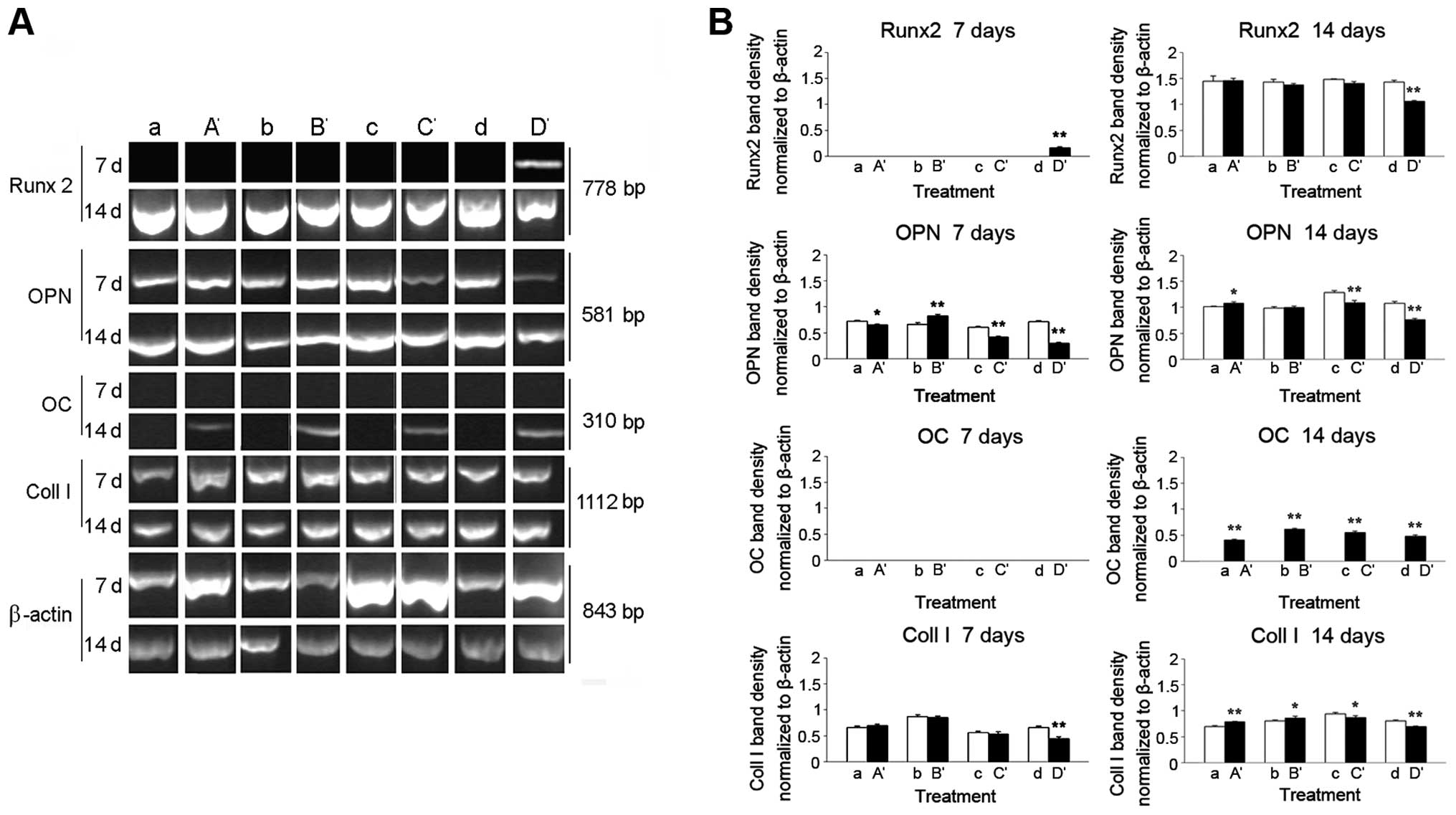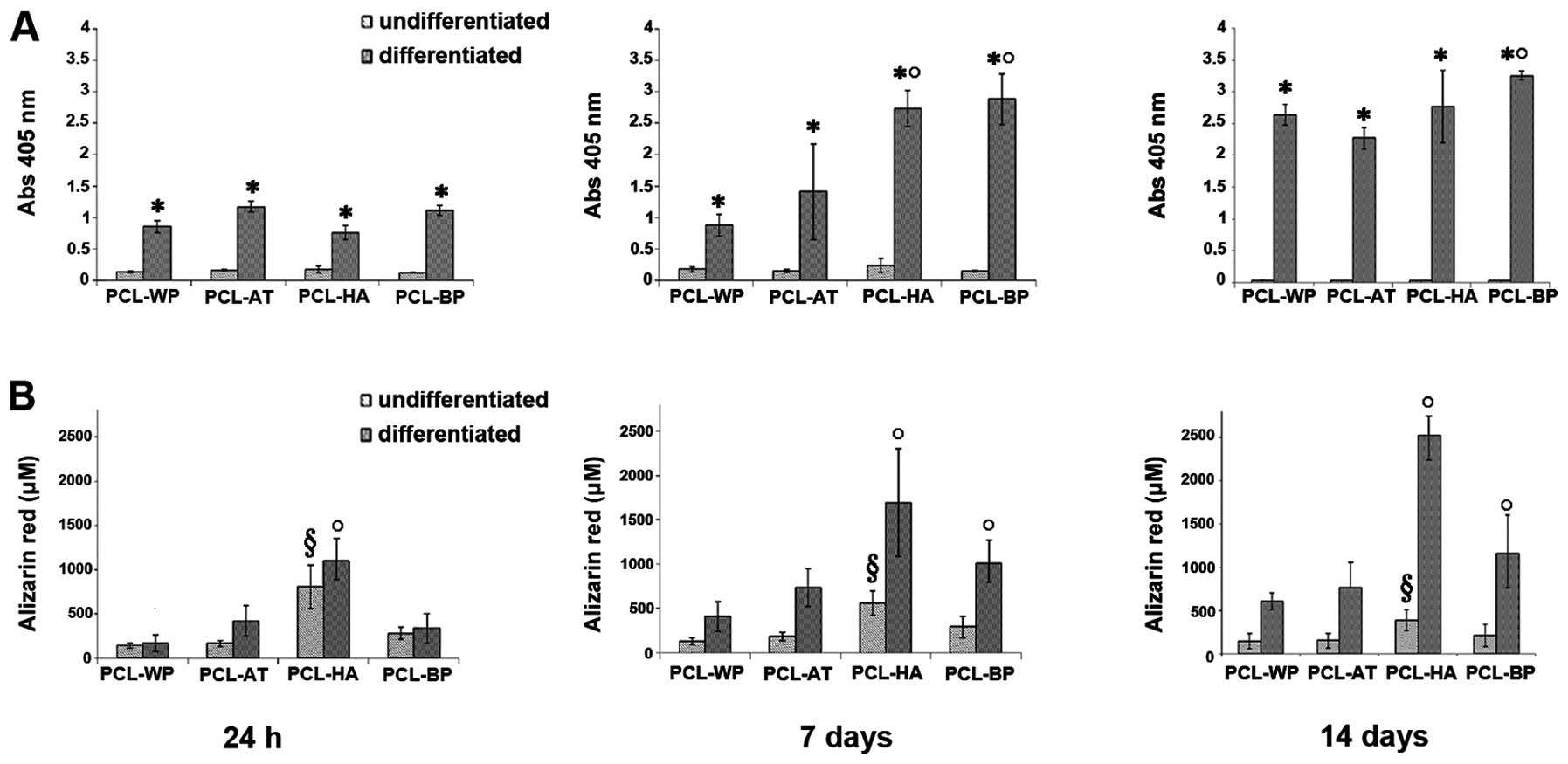|
1
|
Tabata Y: Biomaterial technology for
tissue engineering applications. J R Soc Interface. 6(Suppl 3):
311–324. 2009. View Article : Google Scholar
|
|
2
|
Porter JR, Ruckh TT and Popat KC: Bone
tissue engineering: a review in bone biomimetics and drug delivery
strategies. Biotechnol Prog. 25:1539–1560. 2009.PubMed/NCBI
|
|
3
|
Langer R and Vacanti JP: Tissue
engineering. Science. 260:920–926. 1993. View Article : Google Scholar
|
|
4
|
Schmitz JP and Hollinger JO: A preliminary
study of the osteogenic potential of a biodegradable
alloplastic-osteoinductive alloimplant. Clin Orthop Relat Res.
237:245–255. 1988.PubMed/NCBI
|
|
5
|
Mikos AG, Sarakinos G, Leite SM, Vacanti
JP and Langer R: Laminated threedimensional biodegradable foams for
use in tissue engineering. Biomaterials. 14:323–330. 1993.
View Article : Google Scholar : PubMed/NCBI
|
|
6
|
Agrawal CM and Kennedy MB: The effects of
ultrasound irradiation on a biodegradable delivery system.
Transactions of the Society for Biomaterials. 19:2921993.
|
|
7
|
Mooney DJ, Baldwin DF, Suh NP, Vacanti JP
and Langer R: Novel approach to fabricate porous sponges of poly
(D,L-lactic-co-glycolic acid) without the use of organic solvents.
Biomaterials. 17:1417–1422. 1996. View Article : Google Scholar : PubMed/NCBI
|
|
8
|
Schugens C, Maquet V, Grandfils C, Jerome
R and Teyssie P: Polylactide macroporous biodegradable implants for
cell transplantation. II Preparation of polylactide foams by
liquid-liquid phase separation. J Biomed Mat Res. 30:449–461. 1996.
View Article : Google Scholar : PubMed/NCBI
|
|
9
|
Grandi C, Di Liddo R, Paganin P, Lora S,
Dalzoppo D, Feltrin G, Giraudo C, et al: Porous
alginate/poly(ɛ-caprolactone) scaffolds: preparation,
characterization and in vitro biological activity. Int J Mol
Med. 27:455–467. 2011.
|
|
10
|
Costa-Pinto AR, Reis RL and Neves NM:
Scaffolds based bone tissue engineering: the role of chitosan.
Tissue Eng Part B Rev. 17:331–347. 2011. View Article : Google Scholar : PubMed/NCBI
|
|
11
|
Karsenty G: The genetic transformation of
bone biology. Genes Dev. 13:3037–3051. 1999. View Article : Google Scholar : PubMed/NCBI
|
|
12
|
Ito Y, Hasuda H, Kamitakahara M, Ohtsuki
C, Tanihara M, Kang IK and Kwon OH: A composite of hydroxyapatite
with electrospun biodegradable nanofibers as a tissue engineering
material. J Biosci Bioeng. 100:43–49. 2005. View Article : Google Scholar : PubMed/NCBI
|
|
13
|
Thomas V, Jagani S, Johnson K, Jose MV,
Dean DR, Vohra YK and Nyairo E: Electrospun bioactive nanocomposite
scaffolds of polycaprolactone and nanohydroxyapatite for bone
tissue engineering. J Nanosci Nanotechnol. 6:487–493. 2006.
View Article : Google Scholar : PubMed/NCBI
|
|
14
|
Teng SH, Lee EJ, Wang P and Kim HE:
Collagen/hydroxyapatite composite nanofibers by electrospinning.
Mater Lett. 62:3055–3058. 2008. View Article : Google Scholar
|
|
15
|
Ngiam M, Liao S, Patil AJ, Cheng Z, Chan
CK and Ramakrishna S: The fabrication of nano-hydroxyapatite on
PLGA and PLGA/collagen nanofibrous composite scaffolds and their
effects in osteoblastic behavior for bone tissue engineering. Bone.
45:4–16. 2009. View Article : Google Scholar : PubMed/NCBI
|
|
16
|
Venugopal J, Low S, Choon AT, Sampath
Kumar TS and Ramakrishna S: Mineralization of osteoblasts with
electrospun collagen/hydroxyapatite nanofibers. J Mater Sci Mater
Med. 19:2039–2046. 2008. View Article : Google Scholar : PubMed/NCBI
|
|
17
|
Woodward SC, Brewer PS, Moatamed F,
Schindler A and Pitt CG: The intracellular degradation of poly
(epsilon-caprolactone). J Biomed Mater Res. 19:437–444. 1985.
View Article : Google Scholar : PubMed/NCBI
|
|
18
|
Phipps MC, Clem WC, Catledge SA, et al:
Mesenchymal stem cell responses to bone-mimetic electrospun
matrices composed of polycaprolactone, collagen I and
nanoparticulate hydroxyapatite. PLoS One. 6:e168132011. View Article : Google Scholar : PubMed/NCBI
|
|
19
|
Meezan E, Hjelle JT, Brendel K and Carlson
EC: A simple, versatile, nondisruptive method for the isolation of
morphologically and chemically pure basement membranes from several
tissues. Life Sci. 17:1721–1732. 1975. View Article : Google Scholar : PubMed/NCBI
|
|
20
|
Albrektsson T and Johansson C:
Osteoinduction, osteoconduction andosseointegration. Eur Spine J.
10(Suppl 2): 96–101. 2001. View Article : Google Scholar
|
|
21
|
Hulbert SF, Young FA, Mathews RS,
Klawitter JJ, Talbert CD and Stelling FH: Potential of ceramic
materials as permanently implantable skeletal prostheses. J Biomed
Mater Res. 4:433–456. 1970. View Article : Google Scholar : PubMed/NCBI
|
|
22
|
Karageorgiou V and Kaplan D: Porosity of
3D biomaterial scaffolds and osteogenesis. Biomaterials.
26:5474–5491. 2005. View Article : Google Scholar : PubMed/NCBI
|
|
23
|
Kaplan FS, Hayes WC, Keaveny TM, Boskey A,
Einhorn TA and Iannotti JP: Form and function of bone. Orthopaedic
Basic Science. Simon SR: American Academy of Orthopaedic Surgeons;
Rosemont, IL: pp. 127–185. 1994
|
|
24
|
Cooper DM, Matyas JR, Katzenberg MA and
Hallgrimsson B: Comparison of microcomputed tomographic and
microradiographic measurements of cortical bone porosity. Calcif
Tissue Int. 74:437–447. 2004. View Article : Google Scholar : PubMed/NCBI
|
|
25
|
Bauer TW and Muschler GF: Bone graft
materials. An overview of the basic science. Clin Orthop Relat Res.
10–27. 2000. View Article : Google Scholar
|
|
26
|
Keating JF and McQueen MM: Substitutes for
autologous bone graft in orthopaedic trauma. J Bone Joint Surg.
83:3–8. 2001. View Article : Google Scholar : PubMed/NCBI
|
|
27
|
Damien E, Hing K, Saeed S and Revell PA: A
preliminary study on the enhancement of the osteointegration of a
novel synthetic hydroxyapatite scaffold in vivo. J Biomed Mater Res
A. 66:241–246. 2003. View Article : Google Scholar : PubMed/NCBI
|
|
28
|
Kim HD and Valentini RF: Retention and
activity of BMP-2 in hyaluronic acid-based scaffolds in vitro. J
Biomed Mater Res. 59:573–584. 2002. View Article : Google Scholar : PubMed/NCBI
|
|
29
|
Bignon A, Chouteau J, Chevalier J,
Fantozzi G, Carret JP, Chavassieux P, Boivin G, Melin M and
Hartmann D: Effect of micro- and macroporosity of bone substitutes
on their mechanical properties and cellular response. J Mater Sci
Mater Med. 14:1089–1097. 2003. View Article : Google Scholar : PubMed/NCBI
|
|
30
|
Ahuja G and Pathak K: Porous carriers for
controlled/modulated drug delivery. Indian J Pharm Sci. 71:599–607.
2009. View Article : Google Scholar : PubMed/NCBI
|
|
31
|
Kuboki Y, Takita H, Kobayashi D, et al:
BMP-induced osteogenesis on the surface of hydroxyapatite with
geometrically feasible and nonfeasible structures: topology of
osteogenesis. J Biomed Mater Res. 39:190–199. 1998. View Article : Google Scholar : PubMed/NCBI
|
|
32
|
Tsuruga E, Takita H, Itoh H, Wakisaka Y
and Kuboki Y: Pore size of porous hydroxyapatite as the
cell-substratum controls BMP-induced osteogenesis. J Biochem.
1:317–324. 1997. View Article : Google Scholar : PubMed/NCBI
|
|
33
|
Gotz HE, Muller M, Emmel A, Holzwarth U,
Erben RG and Stangl R: Effect of surface finish on the
osseointegration of laser-treated titanium alloy implants.
Biomaterials. 25:4057–4064. 2004. View Article : Google Scholar : PubMed/NCBI
|
|
34
|
Yuan H, Kurashina K, de Bruijn JD, Li Y,
de Groot K and Zhang X: A preliminary study on osteoinduction of
two kinds of calcium phosphate ceramics. Biomaterials.
20:1799–1806. 1999. View Article : Google Scholar : PubMed/NCBI
|
|
35
|
Dong SW, Ying DJ, Duan XJ, et al: Bone
regeneration using an acellular extracellular matrix and bone
marrow mesenchymal stem cells expressing Cbfa1. Biosci Biotechnol
Biochem. 73:2226–2233. 2009. View Article : Google Scholar : PubMed/NCBI
|
|
36
|
Komori T, Yagi H, Nomura S, et al:
Targeted disruption of Cbfa1 results in a complete lack of bone
formation owing to maturational arrest of osteoblasts. Cell.
89:755–764. 1997. View Article : Google Scholar : PubMed/NCBI
|
|
37
|
Inada M, Yasui T, Nomura S, et al:
Maturational disturbance of chondrocytes in Cbfa1-deficient mice.
Dev Dyn. 214:279–290. 1999. View Article : Google Scholar : PubMed/NCBI
|















